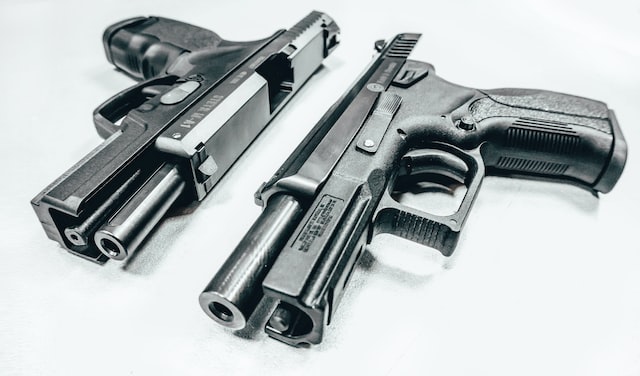
After World War II, the United Nations created a list of weapons that were prohibited in war. This list included things like chemical and biological weapons, as well as certain types of guns. While these rules were created with good intentions, they have not always been effective. For example, during the Gulf War, both sides used prohibited chemical weapons. And in more recent years, there has been an increase in the use of banned guns in conflict zones around the world. So what exactly are the guns that are not allowed in war? And why do countries continue to use them?
The history of guns in war
Guns have had a longstanding and integral role in war since the early 1300s. The invention of the firearm changed the shape of warfare, enabling warfare on a much larger scale and with far greater destructive capabilities. While guns continue to bring about destruction, they have also enabled countries to more effectively defend themselves against aggression by foreign forces. As guns have developed, so too has their deadly tactical effectiveness in battle, from muskets to machine guns to laser-guided missiles. No matter what advancements occur, however, one thing is certain – guns will remain a powerful factor in war for the foreseeable future.
The types of guns that are not allowed in war
War is a very serious business, and research paper writing can help us to understand how weapons that are prohibited from being used in combat contribute to the overall success of those conflicts. Certain types of guns like nuclear-weaponry and chemical-containing ones are not allowed in war for their devastating potential, but it’s important to analyze them as possible deterrents against adversaries as well. Moreover, research papers can also discuss restrictions regarding smaller scale weapons such as laser weapons or autonomous self-firing cannons, which also present significant ethical issues and risks due to collateral damage. A deeper understanding of these topics may bring us closer to creating safer boundaries when it comes to waging war.
How not allowed guns can be used in war
It may seem counterintuitive, but it is true that guns not allowed for civilian use can be put to good use during a war. Because of the military’s ability to buy guns not available to the general public and the special permits that allow them access to weapons not generally available, these guns can be used in a war situation. Guns that are manufactured or sold exclusively to military personnel, such as those designed for sniper operations, can give a substantially better advantage when facing combat on the battlefield. This extra firepower can often mean more successful missions and more lives saved during times of conflict. As technological advances make more specialized firearms available only to military personnel, there will no doubt be an ever increasing number of uses for these weapons in wartime.
The benefits of using not allowed guns in war
The use of firearms in war is a controversial subject. While some argue that the access and power of guns renders them necessary, there are various benefits to not using guns in war. For starters, wars fought without guns leads to fewer deaths as well as less physical and psychological trauma for those on both sides of the battlefield. Diffusing a situation without violence might also open up more opportunities for peaceful resolution and long-term reconciliation between hostile countries. In addition, the lack of fire arms would encourage the use of other weapons such as swords or knives which allows people to hone their skills in unarmed combat and forces combatants to use tactics smarter than brute force. Moreover, it allows soldiers to experience a much more intense version of war, leading to a deeper understanding and appreciation of peace once it is achieved.
The drawbacks of using not allowed guns in war
The use of weapons not explicitly sanctioned by international law in warfare presents a number of ethical, legal, and political issues. These weapons take away a sense of human decency from war by eliminating the need for combatants to face each other in combat or risk being entrapped by one another. Additionally, these weapons often result in greater collateral damage and suffering due to their indiscriminate nature. Consequently, those deployed in violation of these laws can create dangerous precedent with far-reaching global consequences. Not only would it open the door for other countries to employ such weapons, but it could also spark a wave of retaliatory responses where international norms might be broken anew. Ultimately, its use undermines ongoing negations for peace and security as any perceived aggression is likely to be met with yet more destructive methods which run counter to international regulations.
It is important to understand the complex history of guns and how they have been used in war. There are many different types of guns that are not allowed in war, but they can still be useful. These guns can provide many benefits, but there are also some drawbacks. It is up to each individual to decide whether or not to use these guns in war.